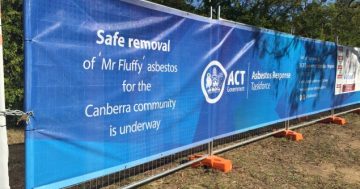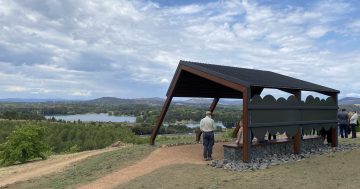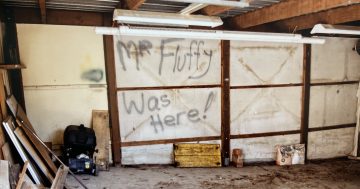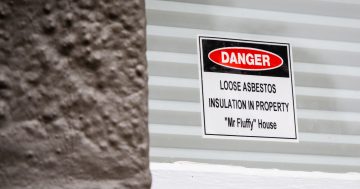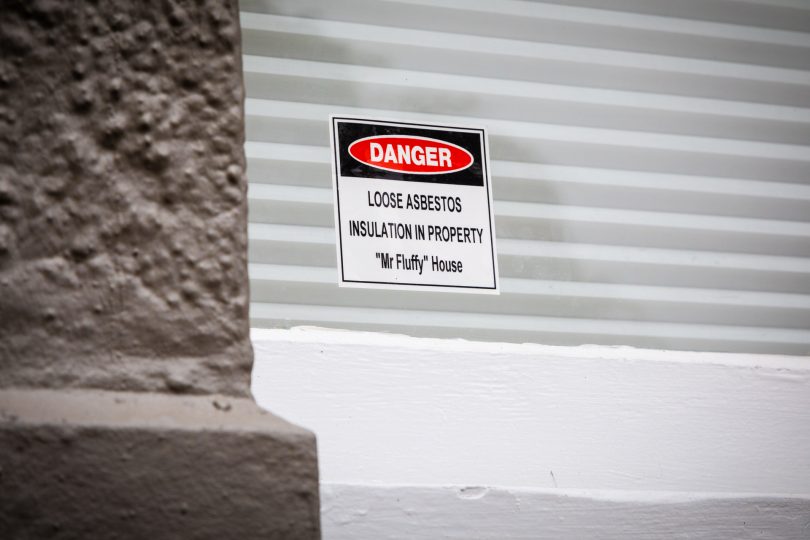
The ACT Government’s Asbestos Taskforce will close at the end of the month. Photo: Michelle Kroll.
After supporting 1000 households to remove loose-fill asbestos insulation from their properties, the ACT Government’s Asbestos Response Taskforce will close at the end of the month.
It’s been eight years since the taskforce was first established in 2014 when the ACT Government embarked on the first step of its $1 billion plan to buy back and demolish all homes contaminated by Mr Fluffy.
Since then, seven previously unknown Mr Fluffy homes have been identified. One was found as late as January this year, while another was discovered in May last year.
Both properties had been initially inspected as part of the original Commonwealth Government asbestos removal program which operated between 1989 and 1993.
According to the government, there are still around 20 privately owned homes and a ‘small number’ of properties now owned by the government which are in the process of being demolished.
A smaller coordination team will continue to manage those remaining properties.

Minister for Sustainable Building and Construction Rebecca Vassarotti said the government was committed to eradicating loose-fill asbestos. Photo: Region Media.
Minister for Sustainable Building and Construction Rebecca Vassarotti said while issues with asbestos did remain, they were “different in size and scope”, and it was time to bring the government assistance back in line with business as usual.
She described it as a “significant milestone”.
“We’re almost at the point where we have completely eradicated loose-fill asbestos in the community, although we acknowledge more homes may be discovered,” she said.
But the Minister said people who discover asbestos would continue to receive the support they required.
“We do really want to reassure the community there will be no change in terms of the support and assistance provided to householders.
“There is still work to be done … particularly, around how we mark this part of our history and how we ensure we have ongoing support for households that are still managing asbestos.”
READ ALSO: The park side of apartment living: residents say the struggle for a spot is getting ‘dangerous’
The government has earmarked the year 2025 as a deadline to remove all loose-fill asbestos from the community.
Ms Vassarotti said while this could include compulsory acquisition of properties, the government’s preference was to work alongside households and come to an arrangement where that did not need to happen.
Last year, the ACT Government established an ongoing buyback scheme, which essentially extended or replaced the initial 2014 one, to manage newly identified properties and support future homeowners.
At the time, Ms Vassarotti said the scheme was still needed.
“Not continuing the scheme to newly identified properties … would be inconsistent with the government’s commitment to eradicate loose-fill asbestos from the ACT residential community,” she told the Assembly.
Last year, the Federal and ACT governments agreed to a $16 million fund to help cover medical expenses for victims of loose-fill asbestos insulation.
It was announced just two days before the death of long-time campaigner James Wallner who contracted mesothelioma after growing up in a Mr Fluffy house.
He died ten months after being diagnosed with the disease.
That support scheme went live in March this year and is open to individuals and their families who may contract mesothelioma over the coming years from exposure to asbestos in former Mr Fluffy homes.
The Commonwealth had been aware of potential health problems associated with the insulation material as early as 1968 – well before self-government in the ACT – but no steps were taken to stop installing the deadly product and loose-fill asbestos continued to be used in homes until 1978.
Former Chief Minister Katy Gallagher secured a $1 billion Commonwealth loan in 2014 after the Federal Government agreed the ACT could not borrow that much alone.












